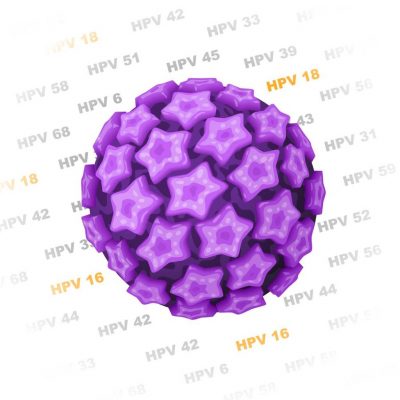Molecular Detection, Identification & Genotyping of HPV

The Human Papilloma Virus (HPV) is a DNA virus, which belongs to a wider group of viruses. This virus affects humans and can cause warts, precancerous lesions or cancer in various parts of the human body and particularly in the cervix. So far more than 100 genotypes of HPV have been identified and about 40 of them infect the epithelium of the genital area. Different HPV types are divided into three groups:
- “low-risk”, in which are genotypes HPV 6, 11, 40, 42, 43, 44, 54, 61, 69, 70, 72, 81 and CP6108 with most common types of HPV 6 and 11, which are responsible for 90% of genital warts and also for a small percentage of low-risk CIN1 and VIN1,
- “intermediate-risk”, in which are genotypes HPV 26, 53 and 66,
- “high-risk”, in which are genotypes HPV 16, 18, 31, 33, 35, 45, 51, 52, 56, 58, 59, 68, 73 and 82. The HPV 16 and 18 are the two most common and dangerous types of oncogenic HPV, since they cause about 70-80% of cervical cancer in women.
All genotypes of HPV can be transmitted easily through skin contact and therefore full sexual intercourse is not required for transmission. However, the transmission of HPV is mainly through sexual contact. Becoming affected with HPV does not mean that the person will develop cervical cancer, since the evolution to cervical cancer is a multifactorial process.
Methodology
The genetic material (DNA) of HPV virus is detected with specific primers using polymerase chain reaction (PCR) and simultaneous genotyping HPV virus with specific probes. We identify 29 HPV genotypes which are: 6, 11, 16, 18, 26, 31, 33, 35, 39, 40, 42, 43, 44, 45, 51, 52, 53, 54, 56, 58, 59, 61, 66, 68, 70, 72, 73, 81 and 83.
Biological Sample
The biological sample used is cervical.
